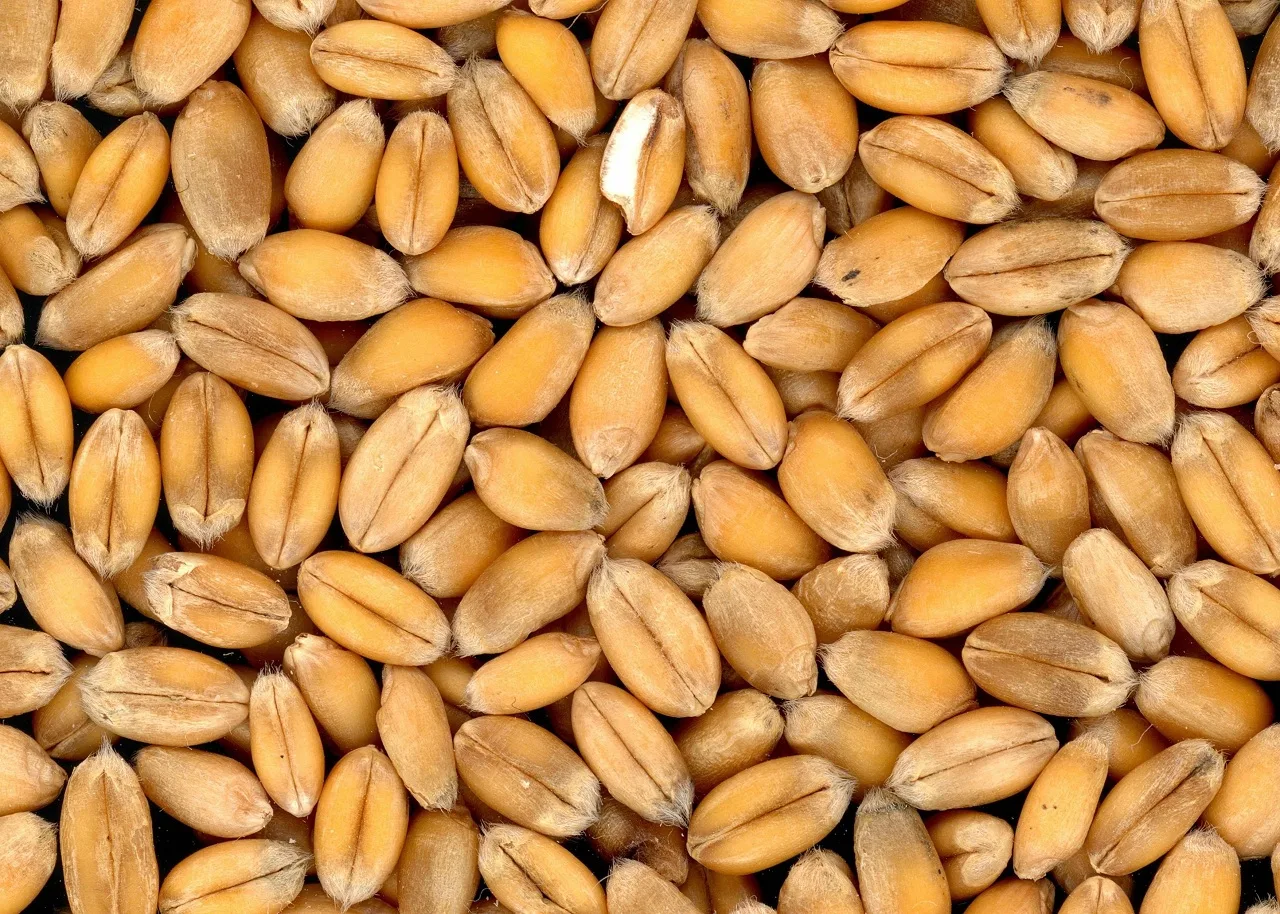Have you ever seen golden-yellow pasta on your dish and wondered what sort of wheat it was made from? Or maybe you’ve been looking at labels and seeing “durum wheat” pop up more and more. But what is durum wheat, exactly?
Let’s learn more about this unique form of wheat, its various applications, the health advantages of durum wheat, and why it’s becoming popular with those who care about their health.
What is durum wheat?
Triticum durum is the scientific name for durum wheat. It is a kind of hard wheat that is mostly cultivated in the Mediterranean, North America, and certain regions of the Middle East. The term “durum” literally means “hard” in Latin, and that offers a tiny idea to its nature. It is the toughest kind of wheat, which means it has a solid structure and a lot of protein. This makes it great for certain meals.
You may not be able to tell durum wheat by its grain shape, but you will know its most renowned byproduct, semolina flour. Semolina is gritty and golden in color, and it’s the flour that gives pasta that solid texture and gratifying bite we all adore.
So while you’re twisting spaghetti on your fork or delving into a bowl of couscous, chances are you’re already savoring the flavor of durum wheat without even recognizing it.
What Sets Durum Wheat Apart?
Durum wheat contains more protein and gluten than regular wheat (sometimes called bread wheat), but the gluten in durum wheat is different. This makes it wonderful for pasta, which requires a firm texture, but not ideal for making airy bread.
Its grains are also more yellowish than conventional wheat, because to the greater amount of carotenoids. That’s why pasta prepared from durum wheat has that warm golden hue and somewhat nutty taste that people adore.
Another thing is its resistance. Durum wheat is a little more adaptable to arid weather and pests. That makes it simpler to cultivate in some places of the globe where other wheat kinds would not flourish.
How is Durum Wheat Used?
Alright, now that we acquired an understanding of what is durum wheat, let’s look at how it’s utilized in the kitchen and beyond.
1. Pasta
This is perhaps the most prevalent usage. From spaghetti and macaroni to lasagna and penne, durum wheat is the star of the pasta industry. Its firm structure helps pasta keep its form when boiling, and that makes it excellent for both basic and rich sauces.
2. Semolina Dishes
Semolina is a coarse flour created by pounding durum wheat. It’s used in recipes like upma in India, halva in Middle Eastern cuisine, and gnocchi alla romana in Italy. It’s also utilized for preparing several sorts of puddings and porridges.
3. Couscous
Traditional couscous is created by rolling wet semolina into small pellets. This mainstay of North African cuisine is fast to make and highly flexible. Whether you mix it with veggies, meats, or stews, couscous provides a nutritious, chewy basis.
4. Bulgur
Although bulgur is commonly prepared from common wheat, there are variants created from durum wheat also. It’s cracked wheat that’s been parboiled and dried. A excellent element for tabbouleh salad or as a rice replacement.
5. Breads and Pizza Crusts
Now this may seem unusual as durum wheat isn’t ideal for airy bread. But in conjunction with other flours, it offers a rich texture and taste to artisanal breads and pizza crusts. Some traditional European breads include semolina or durum flour for a thicker texture and a good chewy taste.
Is Durum Wheat Healthy?
You may be asking yourself, is durum wheat healthy? That’s an excellent question since not all wheat kinds have the same nutritious profile.
Durum wheat is really regarded one of the healthiest types. It’s high in protein, notably gluten, and also includes a reasonable amount of fiber, iron, magnesium, and B vitamins. The high protein level makes it more satiating, which means it may aid with hunger management.
What’s more, the carotenoids in durum wheat aren’t simply for color. They contain antioxidant characteristics that may improve eye health and decrease inflammation.
And here’s another bonus – meals derived from durum wheat like semolina digest more slowly than refined white flour products. This offers a more consistent increase in blood sugar, which is excellent news for anyone seeking to regulate their energy levels or blood sugar surges.
But… What About Gluten?
Now, it’s crucial to know that durum wheat does contain gluten, so it’s not ideal for anyone with celiac disease or gluten sensitivity. The gluten in durum is actually stronger and more elastic, which is excellent for pasta but not for delicate digestive systems.
So although durum wheat advantages are excellent, if you’ve got gluten-related concerns, it’s better to steer away or hunt for gluten-free choices created with other grains.
Key Health Benefits of Durum Wheat
Let’s go a little further into the unique durum wheat qualities that make it a great selection.
1. High in Protein
Durum wheat has more protein than ordinary wheat, which is needed for muscle repair, energy, and general body function. It’s particularly beneficial for vegetarians and vegans who may be seeking for plant-based protein sources.
2. Supports Digestive Health
Thanks to its fiber content, durum wheat helps to keep things moving in your digestive tract. It may help avoid constipation and maintain a healthy gut.
3. Helps with Satiety
The mix of protein and fiber helps you feel full longer. This is great for weight control or simply preventing that afternoon food attack.
4. Good Source of Essential Nutrients
Iron, B vitamins, and magnesium all show up in reasonable proportions in durum wheat. These nutrients play crucial functions in things like energy generation, oxygen circulation, and sustaining healthy neurons and muscles.
5. May Support Eye Health
Carotenoids, notably lutein and zeaxanthin, are naturally found in durum wheat. These chemicals have been associated to decreased risk of age-related macular degeneration.
Is Durum Wheat Better Than Regular Wheat?
So when you put them side by side, is durum wheat nutritious compared to normal wheat? In a lot of ways, sure.
It’s more nutrient-dense, has a superior protein profile, and delivers delayed digestion which is a plus for blood sugar management. However, it’s not a one-size-fits-all response. If you’re making bread, all-purpose flour could work better. But for pasta and semolina-based recipes, durum wheat is hard to surpass.
Final Thoughts
To finish it up, what is durum wheat? It’s a firm, golden kind of wheat that’s been nourishing people throughout the world for generations. From pasta and couscous to semolina porridge, its flexibility and nutritional profile make it a pantry staple worth knowing.
The advantages of durum wheat go beyond simply taste and texture. It abounds in protein, fiber, and important nutrients that may boost your health in a number of ways. And although it’s not for everyone (hello, gluten), for many it’s a healthful and enjoyable element of a balanced diet.
So next time you’re heaping up your plate with pasta or enjoying a nice bowl of couscous, you’ll know precisely what’s in it — and why it’s really doing your body a little of good too.




